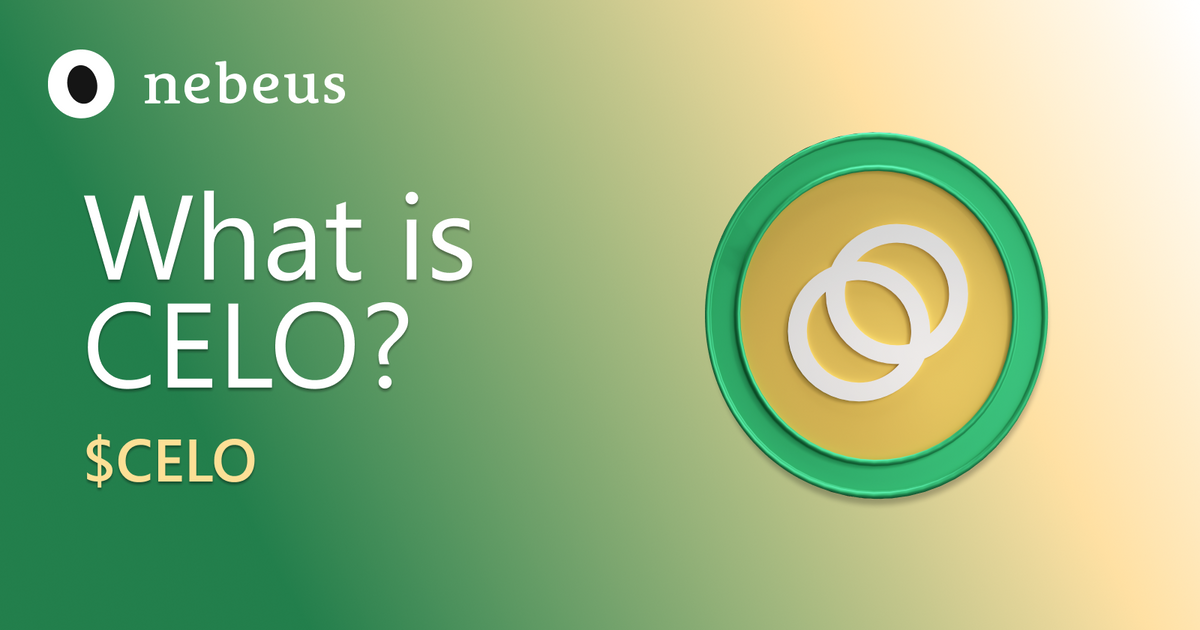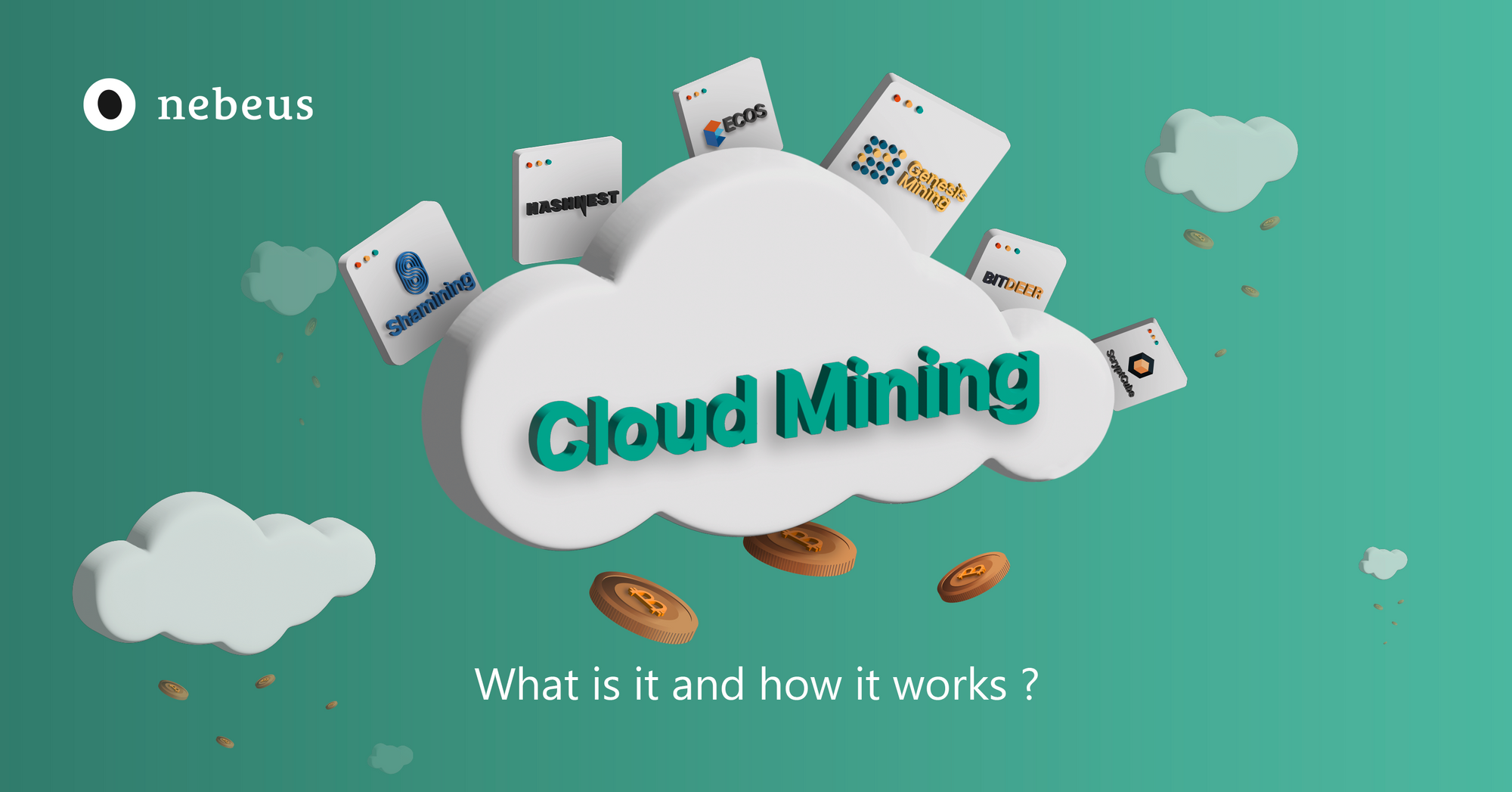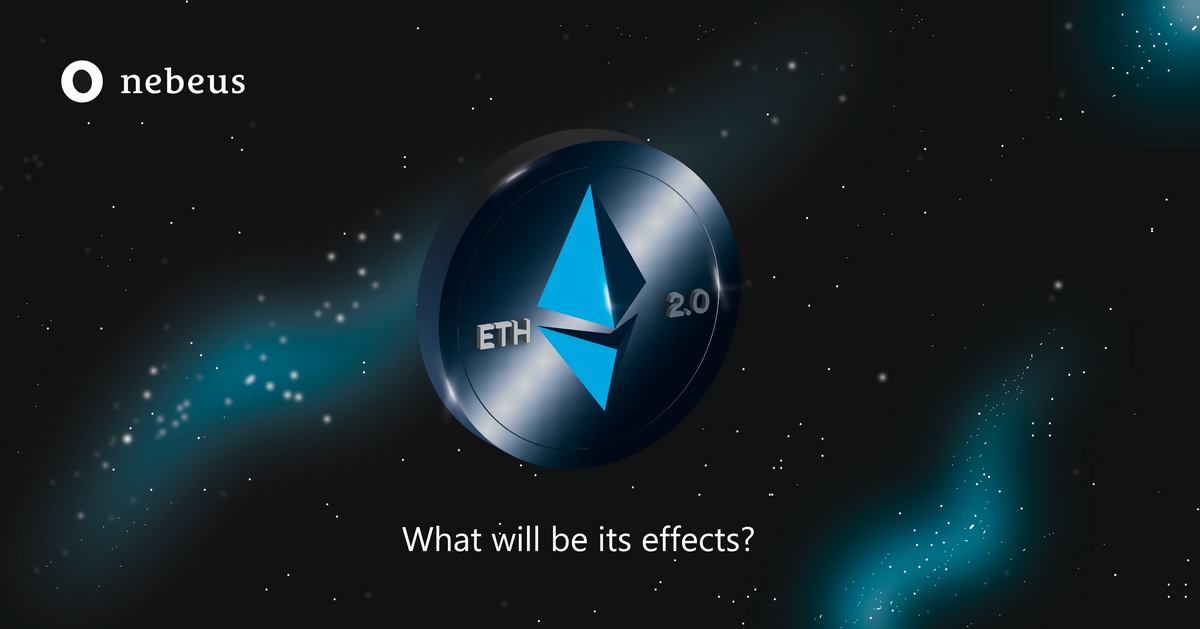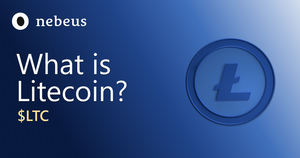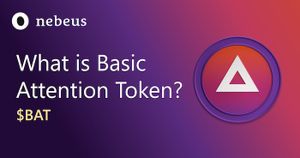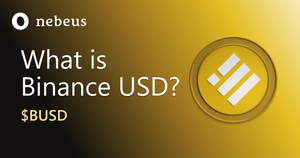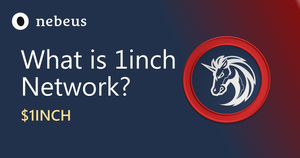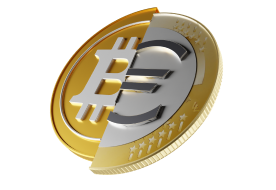“Our mission is to build a financial system that creates the conditions for prosperity—for everyone.”
– Celo
Note: This is part of Nebeus’ new Coin Analysis series, where you can discover the latest crypto coin news.
Celo is a mobile-first blockchain platform developer that offers decentralised finance applications (dApps) and services to anyone with a phone. The ecosystem features a decentralised proof-of-stake blockchain technology stack that is carbon-negative.
Since the mainnet launch in 2020, Celo's network has supported over 1000 projects from builders, developers, and even artists in over 100 countries. In the past, these dApps have included a universal basic income programme and a social cause crowdfunding portal.
You can sign up for a Nebeus account to buy and hold your Celo investment.
What does ‘Celo’ mean?
In Esperanto, Celo means ‘purpose'. The company chose this name as Esperanto aims to easily connect individuals who don’t speak the same native language. Similarly, Celo aspires to build a global network that connects people and provides financial security to those in need.
Celo believes in the future of blockchain technology. They want to push the boundaries of what it can do to help individuals connect and communities thrive, especially by tackling real-world issues, such as lack of access to a stable currency, to alleviate poverty.
How does Celo ($CELO) work?
According to the company's idea of change, short-term actions can have long-term social influence.
Celo is designed to be cross-chain compatible. This supports Celo's objective of inclusivity and is achieved by mapping wallet addresses to phone numbers, which makes payments as simple as texting. A decentralised address-based identity layer keeps things secure.
Other features include:
- Celo Wallet – a cryptocurrency wallet available on Celo's network. Celo Wallet also supports ledger and staking.
- Celo Terminal – where accounts and decentralised applications are managed. The Celo Terminal supports ledger wallets, and users can vote on governance. Available for Mac, Windows, and Linux.
- Mento Exchange – allows customers to trade assets within the Celo Terminal. It also includes Celovote automated staking.
- Provo – where centralised organisations can experiment and learn using a free sandbox for the public sector.
Celo depends on three contributors to help drive its network:
- Light Clients - the Celo dApps on user's devices, like Celo's wallet.
- Validator Nodes - Computers who help the consensus mechanism are involved in validating transactions and creating new blocks.
- Full Nodes - Computerswho bridge Validator nodes and wallets. They handle light client requests and subsequently forward transactions to the validator nodes.
Find out more about how Celo works by reading their publicly-accessible whitepapers.

Who Are the Founders of $CELO?
“We see a [ ] richer ecosystem of currencies which can [ ] accurately map to people’s needs and the societies they live in.”
- Rene Reinsberg
Celo's founders, Rene Reinsberg, Sep Kamvar (who designed a decentralised reputation system which helps users without a credit history), and Marek Olszewski, launched the company back in 2017. They have successfully gone through several funding rounds and have prominent support and backing from influential tech figures, such as Jack Dorsey.
Currently, its main offices are located in San Francisco and Berlin.
What is the $CELO Token?
Celo maintains two types of native tokens:
$CELO
$CELO is a platform-native asset that helps the Celo blockchain and ecosystem expand. It has a fixed supply and varies in value based on usage and governance. $CELO has many utilities, such as:
- Acting as a principal reserve
- Powering governance and native dApps
- Can be staked with validators, meaning mobile users can earn incentives for protecting the system
cUSD and cEUR StableCoins
To participate in confirming blockchain transactions, Celo's daily elected validators must stake CELO, earning cUSD or cEUR as compensation to cover costs. But what are they?
cUSD and cEUR are stablecoins that allow users to share value on their phones as retailers can accept either cUSD or cEUR as stable means of payment online or in-person – either from across the globe or locally – through Celo's payment software and mobile solutions. Uses include cross-border payments, internet payments, and value exchanges and markets, enabled by a network transaction charge of less than $0.01
The stablecoins’ algorithmic stabilisation is publicly verified. It uses an overcollateralised reserve consisting of CELO and other cryptocurrencies like Bitcoin (BTC) or Ethereum (ETH). This ensures that each cUSD is worth one US dollar or each cEUR is worth one Euro. That is, cUSD can be sold for CELO and vice versa.
In the future, Celo intends to allow CELO holders to propose and vote on the establishment of stablecoins that replicate national currencies like the euro or yen.

How to buy Celo? $CELO
CELO can be purchased with fiat currencies on multiple crypto exchanges. Note: there are a variety of wallets that accept Celo's currencies, including Valora, Metamask, Abra, and Opera. Additionally, they can be held and exchanged in Coinbase, Coinbase Pro, Binance, Coinlist, OkCoin, and Bittex wallets.
It can also be stored, sold, and transferred through Nebeus at one of the greatest rates available.
You can buy CELO using a bank transfer or a credit or debit card after providing some basic information on the exchange.
Before acquiring CELO, ensure you have a safe way to store your tokens.
What makes $CELO different?
In addition to its 5 second average block time, instant payments, and super low average transaction fees of less than $0.01, many important aspects make CELO stand out from other blockchains and cryptocurrencies.
CELO Truly Strives to Empower and Connect People
CELO follows the philosophy of Sacred Economics by Charles Eisenstein. From ancient gift cultures to current capitalism, Sacred Economics shows how money has contributed to alienation, competition, and scarcity throughout the history of money.
After the collapse of these trends, Eisenstein proposes that we may discover a fantastic opportunity to move to a more connected, ecological, and sustainable way of being.
As such, Celo is built on two fundamental values: purpose and community. These lead to practices that promote personal and communal growth.
Unique Purpose of Individuals
CELO believe a person achieving their full potential in their own way is vital for personal fulfilment. As a result, CELO strives to promote values that help people reach their full and unique potential.
Meaningful Social Connections
CELO argues that humans live in constant connection and that sustaining healthy relationships is the key to fostering this connection. CELO recognises that individuals are healthier and happier when part of a robust social community that allows for truly meaningful interactions.
Interoperability and Inclusivity
CELO enables native and non-native digital assets to travel freely, cheaply, and quickly across devices, carriers, and nations. CELO turns crypto into usable money (such as cUSD and cEUR) to make money more mobile, global, and accessible than ever before.
Additionally, many people lack assets or credit history to qualify for loans. Companies may use Celo to rethink financing by allowing everyone with a simple phone to save, transmit payments, and even borrow.
It is Helping the Environment By Being Carbon-Negative
Carbon Offset 65.7 Avg Tons Per Month
Donating daily offsets through the network protocol means the operational resources powering the CELO platform are carbon-negative. Celo has already offset 2,285 tonnes of carbon with an average of 65.7 tons per month. To put it in perspective, 320,000 pine trees absorb this much CO2 in a year. That’s enough to make Celo 8 times carbon negative.
How many Celo ($CELO) coins are there?
Max Supply: 1,000,000,000
Circulating Supply (19/05/2022): 439,191,694
Currently, approximately 43.9% of the total supply is already in circulation.
Note: We gather our information from CoinGecko. The numbers written are correct at the time of writing.
What is the Current Price and current Market Cap (19/05/2022)?
Current Price: $1.31
Current Market Cap: $573,212,019
Current Market Cap Position: #95
All-Time Low: $0.800156 on May 22nd, 2022
All-Time High: $9.82 on August 30th, 2021
Note: We gather our information from CoinGecko. The numbers written are correct at the time of writing.
Conclusion
Those who trust in the future of mobile payment infrastructures should consider buying CELO and adding it to their portfolio.
Ready to get involved with Celo already? Join its thriving community of users, developers, and researchers on one of its channels:
- Celo - Reddit
- Celo - Twitter
- Telegram: Contact @celoplatform
- Celo - Discord
- Celo - YouTube
You can sign up for a Nebeus account to buy and hold your Celo investment.
La inversión en criptoactivos no está regulada, puede no ser adecuada para inversores minoristas y se puede perder la totalidad del monto invertido.


